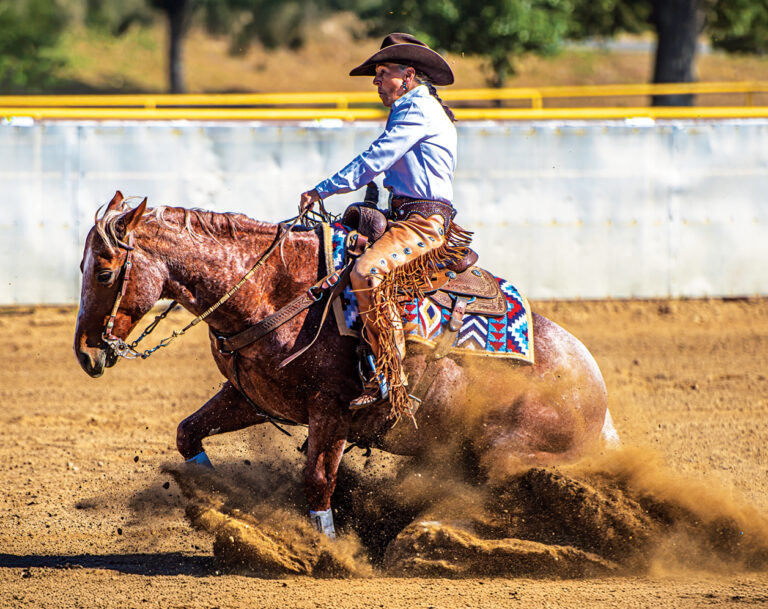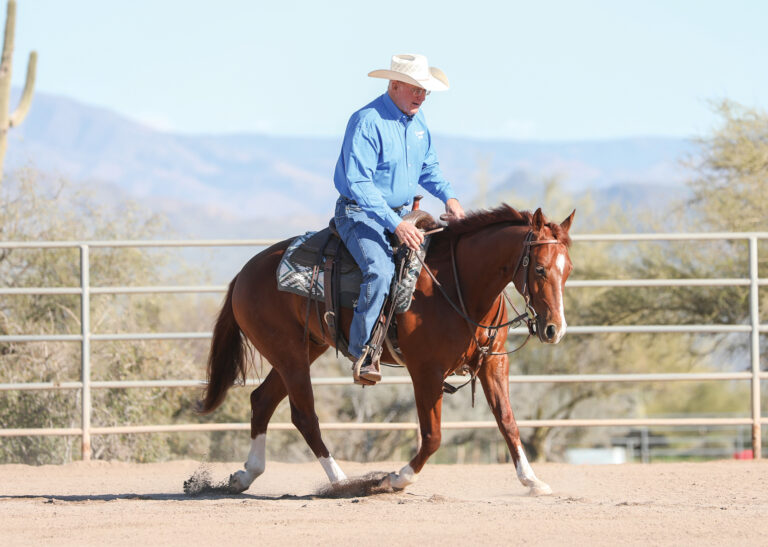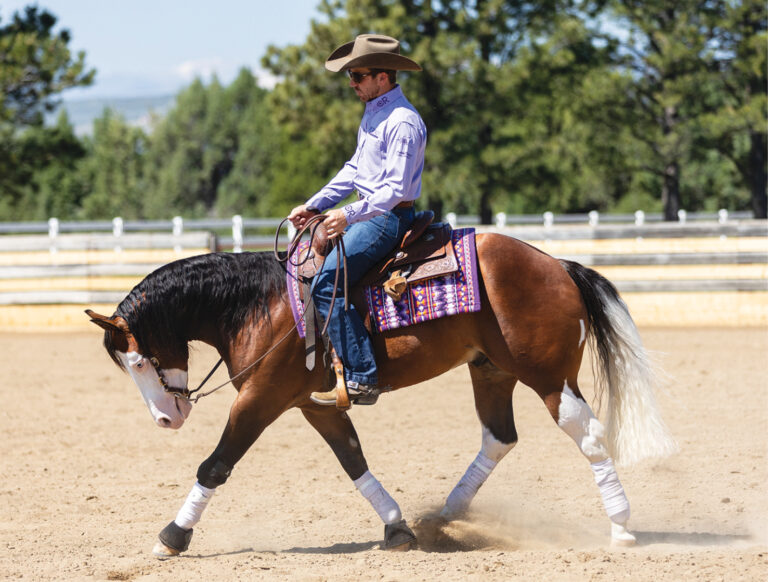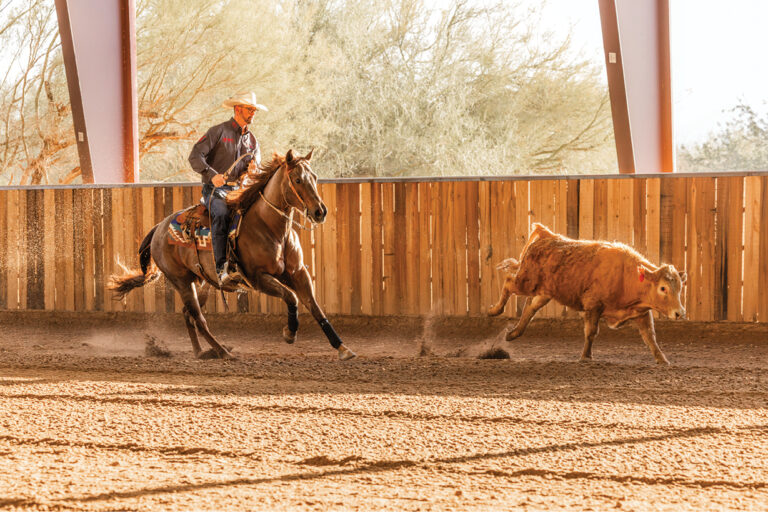A proper warm-up is one of the best things you can do to maximize the success of your ride and protect your horse from injury. When you ease him into exercise through a phased-in warm-up, you allow time for his breathing and heart rate to increase gradually. As the blood flow to muscles steps up, the muscle fibers are warmed and strengthened.
[READ: Learning to Show Horses]

The gradual increase also helps to avoid a build-up of lactic acid and other metabolic wastes in his tissues, which helps your horse avoid early fatigue and other issues. Phased-in work enables joints to flex and tendons to stretch gently, without injury, as they prepare for more vigorous exercise.
With these points in mind, here’s what to consider as you plan a warm-up sequence.
Be smart, go easy. Start slowly. If your horse has been stalled rather than turned out, be extra careful in this regard, and allow extra warm-up time. Also, if your horse is naturally fractious or ready to “blast off” from pent-up energy, don’t just turn him into a pen or put him on a longe line and let him go crazy—that just invites injury (see box). As you plan your horse’s warm-up, think “loosen, warm, supple”—in that order.
Walk to loosen. Easy walking is the part of a warm-up many experts stress the most. Put your horse on a draped rein and in as relaxed a frame as possible to loosen him up. Use your whole arena, or work in extra-large circles to keep stress on joints and tendons/ligaments low. Allow a good 5 to 10 minutes at this easy walk, more if your horse is older and/or especially stiff. (Like aging human athletes, older horses need extra time to get the blood flowing and the muscles/tendons ready to work.)

Trot, lope to warm. After that critical walking period, ease into a trot to get your horse’s blood flowing and his heart rate up. This begins the actual warming up of your horse’s muscular-skeletal system. Continue to use your whole arena and large circles as you work for a few minutes at a trot, then advance to a forward-moving lope.
Bend to supple. When you can feel your horse settling in and warming to his work at the trot and lope, begin some bending to further stretch and supple his muscles. Make your circles smaller, and add serpentines, figure-8s, or other exercises to the mix. Be sure to work equally in both directions, so you supple both sides equally. After a few minutes of bending, your horse should be ready, mind and body, to focus on whatever you want to work on in earnest.
Short on time? Just warm up. On days when you don’t have time for a 20- to 30-minute warm-up and a practice session, don’t short the warm-up. Instead, use it as your saddle time for that day. You’ll keep your horse tuned up and avoid the risk of injury—so you can ride again tomorrow.




